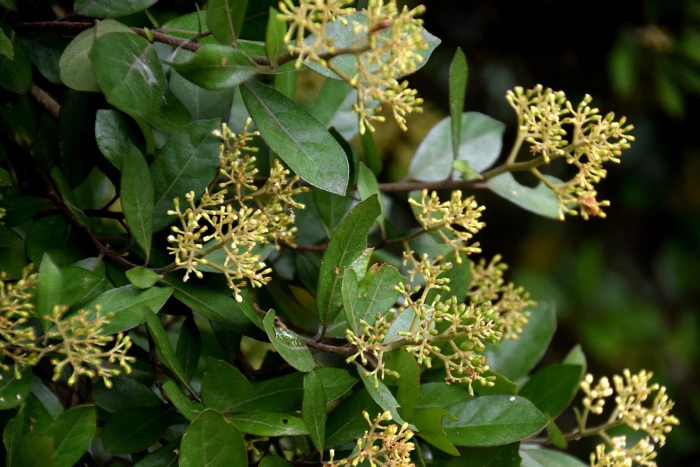Kaikomako
(Pennantia corymbosa)
Kaikomako (Pennantia corymbosa)
/
/

Krzysztof Golik
CC BY-SA 4.0
Image By:
Krzysztof Golik
Recorded By:
Copyright:
CC BY-SA 4.0
Copyright Notice:
Photo by: Krzysztof Golik | License Type: CC BY-SA 4.0 | License URL: https://creativecommons.org/licenses/by-sa/3.0 | Uploader: Tournasol7 | Publisher: Wikimedia Commons |























































Estimated Native Range
Climate Requirements for Bloomington, California
| This Plant | Your Site | Plant Suitability for Your Location | ||
|---|---|---|---|---|
| • Precipitation | 23" - 201" | 13" | Your precipitation may be insufficient for this plant. Irrigate N" / year. | Irrigate N" / year |
| • High Temp. | 60°F - 78°F | 95°F | Your summers may be too hot for this plant. | Too hot |
| • Low Temp. | 23°F - 57°F | 41°F | Your winter temperatures are normal for this plant | Excellent |
This plant should grow well at your location with about N inches per year (Y minutes per month) of irrigation.
Summary
Pennantia corymbosa, commonly known as Kaikomako, is a dioecious small tree native to the coastal and lowland forests of New Zealand. It typically grows to a height of 6-8 meters and a width of 2-3 meters. The juvenile form is characterized by small leaves and tangled, divaricating stems, which is thought to be an adaptation to avoid browsing by the now-extinct moa. As the tree matures, it develops larger leaves and a more conventional tree architecture. From November to February, Kaikomako produces small, creamy-white flowers that are not particularly showy but are fragrant and attract pollinators. These are followed by shiny black fruit in autumn, which are a favored food of the native New Zealand bellbird.
Kaikomako is valued for its ecological role and ornamental qualities, including its interesting juvenile form and the contrast between its mature foliage and black fruit. It is used in restoration plantings and as a specimen tree in gardens that aim to feature native flora. Kaikomako prefers moist, well-drained soils and can tolerate a range of light conditions, from full shade to full sun, making it versatile for cultivation. It requires regular watering, especially in drier climates. While it is not commonly afflicted by diseases, it can be sensitive to drought and strong winds.CC BY-SA 4.0
Kaikomako is valued for its ecological role and ornamental qualities, including its interesting juvenile form and the contrast between its mature foliage and black fruit. It is used in restoration plantings and as a specimen tree in gardens that aim to feature native flora. Kaikomako prefers moist, well-drained soils and can tolerate a range of light conditions, from full shade to full sun, making it versatile for cultivation. It requires regular watering, especially in drier climates. While it is not commonly afflicted by diseases, it can be sensitive to drought and strong winds.CC BY-SA 4.0
Plant Description
- Plant Type: Shrub, Tree
- Height: 15-30 feet
- Width: 3-6 feet
- Growth Rate: Moderate
- Flower Color: White, Cream
- Flowering Season: Spring, Summer
- Leaf Retention: Evergreen
Growth Requirements
- Sun: Full Shade, Part Shade, Full Sun
- Water: High
- Drainage: Medium
Common Uses
Bird Garden, Butterfly Garden, Potted Plant
Natural Habitat
Coastal and lowland forests of New Zealand
Other Names
Common Names:
Scientific Names: Pennantia corymbosa, Pennantia odorata
GBIF Accepted Name: Pennantia corymbosa J.R.Forst. & G.Forst.